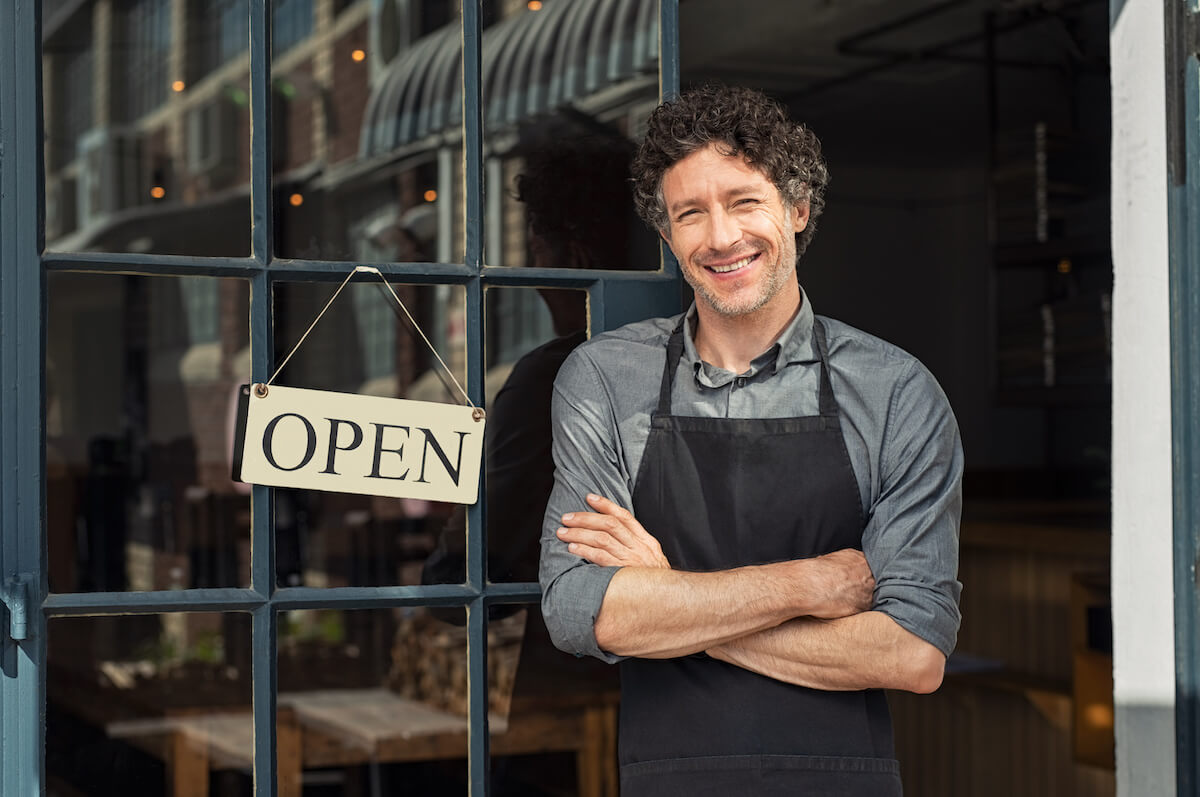4 ways to get funding for a restaurant
Skip the article and turn takeaways into action by scheduling a call with our team.
For restaurant owners, the laws of finance are to restaurants like the law of gravity is to acrobats: Not plummeting is an indication of success! To get your restaurant up and flying with ease, you’ll need funding. Because nothing in the restaurant industry, not even a lemonade stand, can launch without initial capital.
You can indeed say this of any small business, but the restaurant industry comes with its own unique set of challenges. A modern, regulation-approved kitchen requires some spendy restaurant equipment, from ovens to walk-in fridges. And that’s just the back of the house.
You must include your opening budget in your business plan, which also needs to be rock solid. You won’t get far without it, whether you’re experienced in the restaurant business or opening a new restaurant. Overspend, and you’ll put yourself too far into debt or drain your savings. Underspend, and you may be missing key components that could lead to a tumble.
Funding for a restaurant is possible thanks to four options we’ll explore in this article. First, though, it’s important to understand everything that goes into the ask.
Initial funding: Get your numbers right

Figuring out your capital startup costs is mandatory–there’s no way around it. Even if you’re more of a shoot-from-the-hip kind of person, this is not a good place for guesswork. You’ll need real numbers and realistic expectations. One of the most common reasons restaurateurs fail at opening a new restaurant is a lack of startup capital, and that comes down to financial planning.
For reference, the average nationwide cost of opening a new restaurant with leased property costs around $375,000, or $735,000 if you intend to own the building. A food truck can be significantly less, somewhere around $60,000. Because of inflation and rapidly changing interest rates, those numbers may tend towards the higher side these days and can certainly be higher in major urban areas.
While we’re not financial advisors, we strongly urge you to dig down into this part of the work. So, here are things to consider:
- What restaurant equipment you’ll need, both in the front-of-house and back-of-house
- How you intend to design the interior of your restaurant, including whether you want to renovate or not
- How many staff you will need, including managers
- How much operational cash you’ll need before you start making a profit (do not count on making a profit your first year)
- What amount of money do you intend to pay yourself during your startup period
Most restaurants fail within the first few years of operation, often because they don’t account for every startup cost and restaurant need. That can be as simple as overlooking the fact that owners need to pay themselves unless they have significant personal savings or are comfortable sleeping on a cot in the storage room.
Once you know your budget, you can start searching for capital. Funding for a restaurant is different from other startups. Bank loans for restaurants take a lot of work to find. So, once you know the loan amount you actually need, consider the following funding options.
4 ways to find funding for a restaurant

Banks aren’t foolish. They know that opening a restaurant can be a risky venture, and they might not get repayment. That simple reality makes getting money from lenders, well, challenging.
It’s certainly possible to find restaurant financing through traditional small business loans, but there are other financing options that make more sense for restaurateurs.
1. Small Business Administration (SBA) loans
An SBA loan is an excellent option for entrepreneurs looking to start a new restaurant. The U.S. Small Business Administration is a government agency that connects small businesses with lenders while guaranteeing the loan to a certain amount.
Recently, the SBA made loans more accessible for new restaurants thanks to its Restaurant Revitalization Fund. The most popular SBA loan is the SBA 7(a) loan, which covers most startup costs, including real estate, kitchen equipment, repairs, or even purchasing an existing business. Because interest rates are changing rapidly, it’s hard to say what you’ll lock in at the time of your loan—though there’s a good chance it’s between 5-10%.
The SBA offers other restaurant loans as well, including an Express loan. This variety is suitable for small amounts and has a short-term turnaround, but it also comes with a higher interest rate.
Of course, for any of these SBA programs, you’ll need to establish eligibility, go through a credit score check, and fill out plenty of paperwork in the application process—but hey, that’s hardly surprising.
2. Friends and family
Rounding up money from friends and family is a time-tested way of starting a new business and has been the primary funding method basically forever. Whether or not you can pull this off largely depends on your network—which we can’t help you with.
We can suggest a few ways to get friends and family involved in your restaurant funding. Generous lump-sum gifts or interest-free loans from relatives are always nice, but people with access to that likely aren’t reading this article. Instead, here are a few options to consider:
- Cut them in on profits: Offer an investor a certain amount of profit commensurate with their investment.
- Make them a business partner: Working with friends and family you know you work well with can help take some burden off your shoulders.
- Be really nice to them: Treat them like VIPs at your new restaurant, name a dish after them, always have a free drink or appetizer to offer, you get the idea…
Naturally, mixing money with personal relationships can get messy. But small business owners have done so successfully before, so perhaps that’s the right answer for you. Transparency and honesty are crucial to keeping strain out of these relationships when it comes to money. Friends and family can accept negative cash flow but have a harder time accepting a negative attitude.
3. A local restaurant investor
Having a restaurant mentor can be a wonderful thing. They likely have a wider network than you do, some of whom may be willing to invest in your restaurant in a manner somewhat less personal than your family might. This again comes down to personal relationships, but leaning into your network is another powerful way to get your ahold of investment capital without having to go hat in hand to your aunt.
Connecting with an angel investor is a far more noble way of raising money. Ideally, the investor you connect with will be a restaurant veteran and will be able to give you some pointers. First, however, you’ll have to impress them with your business plan and food, so make sure you do your homework before you make any approach.
4. Crowdfunding
Hopeful restaurateurs can and have started restaurants via crowdfunding sites like Kickstarter or Gofundme. Be prepared to tell a good story—maybe you are attempting to revitalize a favorite local pub or offering a unique type of cuisine at your food truck. Sell the story and create enticing rewards for different levels of funding. You can get the funding you need if you market your project right and get people excited about your vision.
It helps if you’re already well-known in the culinary world. For example, if you have a popular social media channel for food. If you have a talent for cooking, cultivating a following on social media before you consider starting a restaurant can be a viable and non-traditional path toward owning a restaurant.
Step up to the plate and get funded

By creating a solid business plan and knowing just what startup costs you’ll need, you’ll be better prepared to get that initial capital. If you don’t have deep pockets, don’t fret—but also don’t mortgage your house or max out your credit cards. There are better ways to find funding for a restaurant.
Your business plan should cover all your anticipated costs, which should, in turn, include an excellent POS system—and excellent software to run your new restaurant. Tools like Yelp Guest Manager and Yelp Kiosk can help save you money when you’re starting out by streamlining operations and making your life much easier.
Few people are more pressed for time than new restaurant owners, so tools that make things work smoothly can be worth their weight in gold.
So if you’re looking to raise funding for a restaurant, consider how much money good software can save you and help you earn. We promise it’s a lot. If you want to find out more, give us a shout for a free demo. We love helping new restaurants get started.